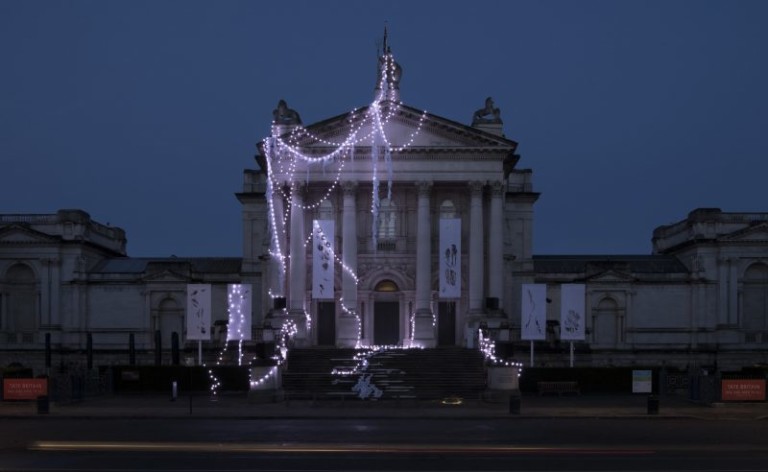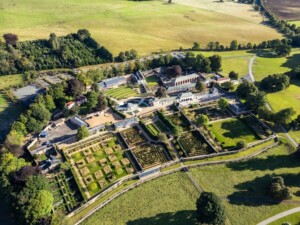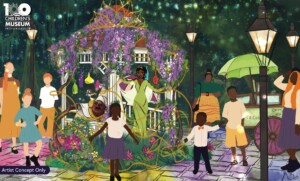Tate Britain’s façade has been decorated by artist Anne Hardy for the annual winter commission, transforming the gallery into a temple marooned by rising sea levels with tattered banners and tangled lights.
In an attempt to raise awareness about the impact of climate change, Anne Hardy has taken inspiration from the rhythms of the earth and the tides of the River Thames.
The building’s grand entrance now appears to be a marooned temple with tattered banners and tangled lights, with sculptural objects on the steps.
Hardy is known for large-scale sculptural installations that combine physical materials with light and sound, in order to create immersive environments.
The Depth of Darkness, the Return of the Light
Her commission for Tate Britain, entitled ‘The Depth of Darkness, the Return of the Light’, is surrounded by an atmospheric soundscape of rain, thunder, birds and insects.
The work alludes to social and political issues and takes visitors to a post-apocalyptic future, with Hardy imagining the destruction of Tate Britain.
Tate Britain’s site on the riverbank was once marshland and may be submerged underwater by 2100 due to rising sea levels.
The Depth of Darkness, the Return of the Light also features a new 21-minute quadrophonic sound work, incorporating field recording from under and on top of the River Thames.
Tate Britain is possessed in a post-apocalyptic future
Anne Hardy is set to take over Tate Britain's entrance in an exploration of the natural rhythms of the earth, tides, and the winter solstice. ❄️
Meet the artist here: https://t.co/CEbBlk0tNh pic.twitter.com/o6hBNi1F8p
— Tate (@Tate) November 29, 2019
It takes visitors on a sonic journey from inland to ocean, while the light and sound give the impression that Tate Britain has been possessed.
“I’m very excited to see another transformation of Tate Britain’s iconic façade,” said Alex Farquharson, director of Tate Britain.
“Anne Hardy has created something that is at once fantastically imaginative and urgently topical, reminding us not only of the changing seasons but also of the changing climate.”
The Depth of Darkness, the Return of the Light is at Tate Britain until January 26, 2020.
Earlier this year, Tate Britain announced the largest ever grant to Tate Archive from the Marie-Louise von Motesiczky Charitable Trust.
Image: Maureen Paley / Tate (Oliver Cowling)













